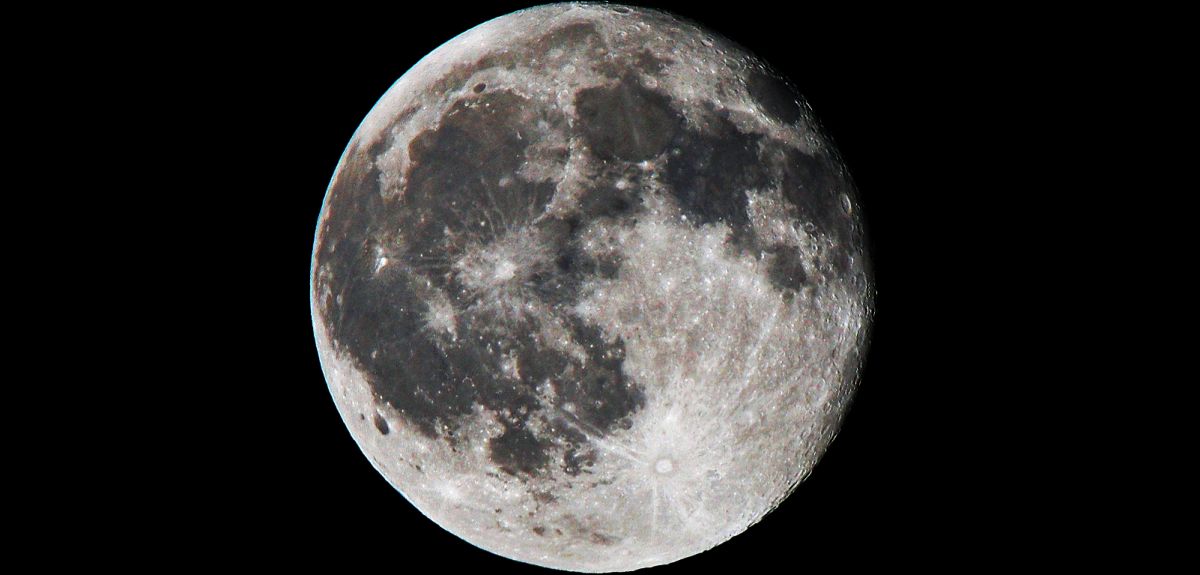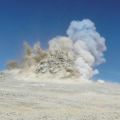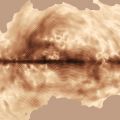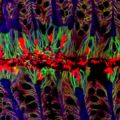
Where did the Moon come from?
As people swoon over the 'supermoon' currently lighting up our skies you might be surprised to learn that scientists are still debating the origins of the Earth's closest companion.
This week a special edition of the journal Royal Society A is published featuring ideas about the Moon's origins discussed at a meeting held last year.
I asked Professor Alex Halliday of Oxford University's Department of Earth Sciences, who co-edited the special edition and co-wrote the introduction, about the historical quest for the truth about the Moon and how the latest theories could be put to the test…
OxSciBlog: Why has understanding the Moon’s origins been, historically, such a challenge?
Alex Halliday: The Moon is unusual compared with other moons in our Solar System. It is the largest moon relative to the size of its host planet, it is gradually moving away from Earth, and its orbit is tied to Earth's rotation with most of the angular momentum in the Moon’s motion. It also has a lower uncompressed density than that of Earth implying a smaller iron core.
We have known these things for a while and they fit to varying degrees with a number of old theories: fission (that the Moon was spun out of Earth’s interior); co-accretion (that the Moon just formed alongside Earth); and capture (that Earth captured a wandering planetary embryo into orbit).
Since samples were returned in the Apollo missions in the Sixties and Seventies five other things have become apparent:
First, the isotopic compositions of elements like oxygen and titanium are highly diverse in meteorites and hence probably radially variable within the Solar System, providing a kind of fingerprint for where atoms have been derived from. They are almost identical between the Earth and its Moon – suggesting that the material that formed the Moon came from Earth.
Second, the Moon is much more depleted in volatile elements - not just water but also in potassium for example. This suggests that either the Moon did not come from Earth, or that the process of lunar formation was hot, and somehow depleted the material in volatile elements.
Third, the Moon formed late – isotopic techniques show that the Moon formed more than 30 million years after the Solar System, whereas other Moon-sized objects should form within the first million years or so of the formation of the swirling disk that built our Solar System.
Fourth, the oldest rocks brought back by Apollo come from the Highlands (the whitish bits when you look at the Moon at night) and appear to have formed as various concentrations of crystals that floated/sank in a lunar magma ocean – suggesting a hot fiery start.
Fifth, the trace elements (such as rare earth elements) in younger lunar basalts (the dark areas on the Moon) provide evidence that they were derived by melting a deep lunar interior that itself was made of crystals that accumulated in this magma ocean – in other words the fiery magma ocean was global and extended to deep within the Moon.
All of this led to a model of a Moon origin through a massive late collision (the 'Giant Impact') between two already formed planets – the proto Earth when it was perhaps 90% formed and another smaller planet sometimes called 'Theia' that made up the remaining 10% (so about the size of Mars). Theia struck the Earth with a highly energetic glancing blow generating the angular momentum and a debris disk of hot degassed material from Earth’s outer iron depleted parts that coalesced to form a molten ball.
This idea was finally established in 1984 in a meeting in Hawaii on the origin of the Moon. Subsequently, dynamic supercomputing simulations were able to successfully generate a Moon in this fashion. This fiery ball would have originally occupied perhaps about a third of the sky at night but has been migrating further away as a now cooled Moon ever since it formed.
OSB: What are the latest ideas about how the Moon formed?
AH: The Giant Impact theory is the least worst explanation for all of the above features, but there is a problem. Those scientists developing the computer models use a technique called smoothed particle hydrodynamics and this treats the material in the proto-Earth and Theia as made up of large numbers of equally sized large fragments (the so called 'particles') that interact with each other by gravity. The source of the fragments can be traced through the simulations. Nearly all of the fragments from Theia wind up embedded in the Earth. On this basis Earth has a composition that is a mix of (say) 90% proto-Earth and 10% Theia. Very little is lost from Earth.
However, when the scientists track the proportions of the two planets that wind up forming the Moon (which is only about 1% of Earth’s mass) they are very different. In nearly all successful simulations the Moon is mainly (>50%) made up of material from Theia. This is hard to reconcile with the isotopic evidence that the Moon formed from atoms like those found in the Earth rather than in other parts of the Solar System.
Four explanations for this have been considered and the pros and cons formed the main basis for the Royal Society’s Discussion Meeting on the Origin of the Moon in September of last year, the papers from which are now published:
1) Theia formed at the same heliocentric distance as the proto Earth so that the isotopic compositions look the same: The difficulty with this comes from explaining why the two planets stayed in a stable configuration for over thirty million years before colliding.
2) Meteorites are sampling the Solar System outboard of the Earth whereas Theia came from closer in to the Sun: It could be that Theia came from an inner region of the Solar System such as in the vicinity of Venus or Mercury where isotopic compositions look the same as those of Earth. We cannot test this without samples (rock or atmosphere) that we know came from Mercury or Venus.
3) The Giant Impact was so energetic that the atoms in the Earth were able to mix and exchange with those in the disk from which the Moon formed, eliminating original differences: This works for oxygen but is harder for some elements that are more refractory like titanium.
4) The simulations are simply wrong: A new class of simulation was published in 2012 proposing a Moon-forming impact between Theia and a proto-Earth that was already spinning very fast, perhaps with a day of just two hours. In other words the angular momentum is not generated by the Giant Impact – it was already present. Under these circumstances a Moon can be generated by a head on collision with a much smaller Theia – perhaps 2% of Earth's mass – leading to a debris disk dominated by material from Earth or at least in similar proportions. The problem with this and similar models is with how to slow down the Earth-Moon system afterwards. The authors have appealed to a tidal resonance with the Sun but some argue this is unlikely to work.
OSB: How might future missions test these ideas?
AH: A mission to Venus to sample its atmosphere or to Mercury to sample the rocks on its surface and measure the isotopic compositions would be invaluable. However, it probably requires returning the samples to Earth for measurement in the laboratory in order to achieve the precision required. It would allow us to test 2 above. Such a mission is a long way off. It is conceivable that we have samples of Mercury in our meteorite collections but do not yet know it. Some have argued for this but the case for any particular group is not entirely convincing yet.
OSB: What continues to fascinate you about the Moon's origins?
AH: The Giant Impact became, not just a model about the Moon, but an example of a mechanism by which all of the terrestrial planets formed. Other impacts did not form moons that persisted but the process is thought to be fundamental to planetary growth. As such it goes to the heart of the issue of how Earth-like planets originate. Of course Earth's spin also gives it day and night and this plus the tidal effects of the Moon affect habitable environments. Therefore, understanding how the Moon formed goes to the heart of the issues of origins and how habitable Earth like worlds are formed.
Yet, today, hundreds of years after Galileo showed the world the mountainous features of the Moon and started modern observational astronomy, hundreds of years after John Wilkins and Robert Hooke at Oxford discussed how to build a space craft to visit the Moon, and went on to found the Royal Society, and decades after Armstrong and colleagues brought back those precious samples of lunar rock, we still do not have a satisfactory explanation for how the Moon formed.
This is a scientific issue of deep significance that needs to be resolved.
 Blasting back to the Big Bang
Blasting back to the Big Bang Untangling Milky Way's magnetic personality
Untangling Milky Way's magnetic personality Explosions, volcanoes & risks
Explosions, volcanoes & risks Promising results in efforts to develop new malaria treatments
Promising results in efforts to develop new malaria treatments Online help to democratise global health research
Online help to democratise global health research Shootout at the OK Colon
Shootout at the OK Colon